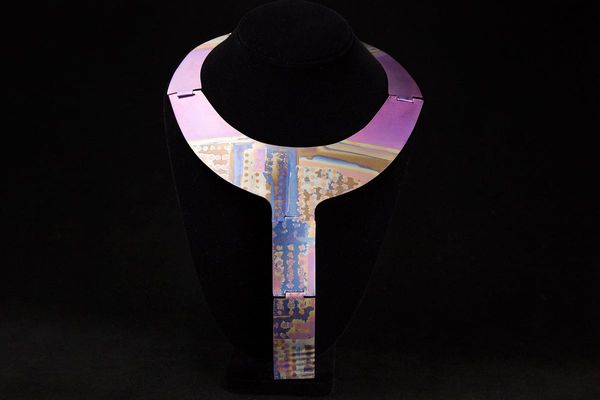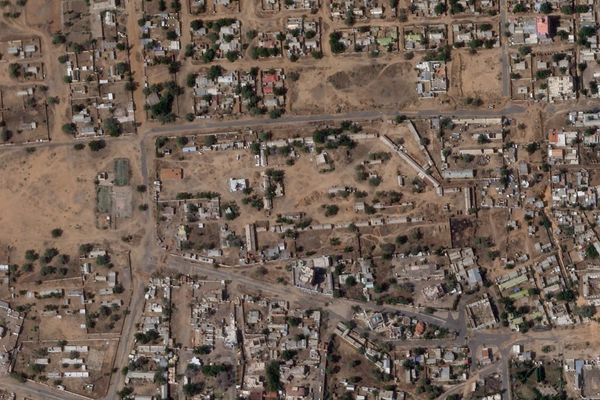
An expert advising the New South Wales Environmental Protection Authority on Cadia Hill goldmine has raised concerns about the adequacy of its dust regulations imposed on the mine.
The EPA began investigating the goldmine in May after dozens of local residents reported elevated levels of heavy metals in their drinking water. It established an expert panel on 30 June which included Dr Ian Wright, an academic at Western Sydney University, who was involved in the first few rounds of community water testing.
The regulator’s environmental protection licence, issued to Newcrest’s Cadia mine, does not include discharge limits for “metal-contaminated dust emissions” like it does for metals and other pollutants expelled in wastewater.
“I am pleased that the EPA is investigating the impact of this mine on the local environment,” Wright said. “But also, the adequacy of the EPA regulations imposed on this mine also warrants investigation.”
“In my view, the EPA licence has not adequately regulated metal-contaminated dust emissions from the mine.”
His comments follow the announcement of a NSW parliamentary inquiry into the health and environmental impacts of metal mining, which will examine the effectiveness of government agencies’ role as regulators and the wider regulatory framework.
The inquiry, established last week, will also investigate the adequacy of the response and any compliance action taken by the regulatory authorities to complaints and concerns from communities affected by mining activities.
The NSW Greens’ mining and water spokesperson, Cate Faehrmann, said the inquiry would “closely examine” the response by the EPA to the concerns of the Cadia community and is due to report its findings by 21 November.
“Our environmental and planning laws are not fit for purpose when it comes to protecting communities, culture and the environment from mining activities,” she said.
“We’re determined to get to the bottom of what’s been happening at the [Cadia] mine and whether the EPA response is in line with what the community and government expects from its environmental watchdog.”
Cadia’s general manager, Mick Dewar, welcomed the inquiry.
“Mining safely, responsibly and sustainably is what our local community expects of us and what we demand of ourselves,” he said. “Health and safety isn’t an option for Cadia, it’s a prerequisite.”
“We take great pride in our 25-year involvement with the central west region and we look forward to showing how our operations can continue supporting jobs, regional investment and the energy transition.”

Wright, who has been involved in at least 15 court cases regarding water pollution associated with mining, said the licence for the goldmine had “very clear and focused” limits for metal emissions in water, but no explicit discharge limits for metal concentrations in dust emissions.
He said that was a concern “since dust from this mine plausibly contributes metal fallout over the local area”. The extent to which dust from the mine contributes to metal contamination in the area is being investigated by the EPA.
Air quality monitoring of type 1 and type 2 substances, which contain heavy metals and other toxic compounds, is required at the main crusher vent as a condition of the mine’s licence.
According to the licence, which was updated on 1 August, Newcrest is required to monitor the concentration of pollutants being discharged from the mine and “must not exceed the concentration limits specified for that pollutant”. It is required to take fortnightly samplings of the emissions from the main crusher vent and provide a full chemical analysis within 28 days of the date of sampling to the EPA. The latest report was due last Friday.
The EPA told the Guardian Australia that it has received the metals report and will provide an update once it has finished reviewing the results and completed further analysis.
Last week the EPA published an overview of water testing results from 40 residential properties, which said most results were within Australia’s drinking water guidelines. The regulator has so far sampled water from tanks and kitchen taps at more than 85 properties.
It said lead was detected at two properties “at or marginally above the accepted level” at the kitchen tap, but rainwater tank samples from those residencies had lead levels below the guidelines. Another six properties had levels of lead above the guideline values in their rainwater tanks, but not at the kitchen tap.
“The results of the testing also show how important it is to maintain tanks and tank water distribution systems to ensure a safe supply of drinking water,” the EPA said.
The regulator said it was conducting a “comprehensive” soil, air and water monitoring program and was “analysing a large amount of data so we can understand the potential sources impacting the community”. It added that those results and the EPA’s sampling methods would also be reviewed by the expert panel, including Wright, on Friday.







